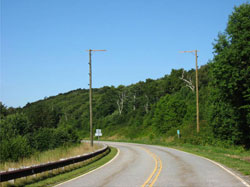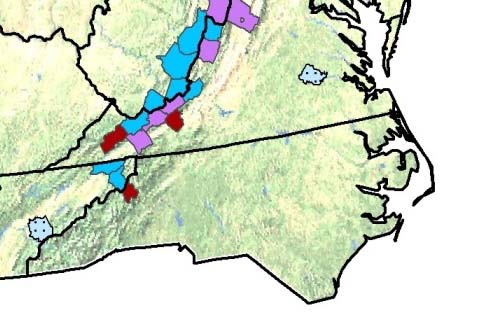 |
| Photo: NC Wildlife Commission |
Endangered Carolina northern flying squirrels can now safely cross the Cherohala Skyway in western North Carolina thanks to telephone-pole-like crossing structures. Before the poles were installed, in 2008, the squirrels did not cross the Skyway because the distance between the trees on either side of the road exceeded their gliding ability. The northern flying squirrel populations on each side of the roadway did not interbreed.
The squirrels’ use of the poles has been documented with video cameras mounted on the pole tops.
The North Carolina Wildlife Resources Commission hopes to allow trees to grow closer to the Skyway, which will allow them to eventually remove the poles.
More details, and a video, are available from the Commission’s press release.

